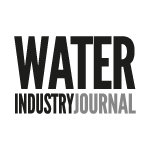By Oliver Lang, Sunny Patel and Norbert Rademacher, Hach
Sonoco’s Stainland Board Mill close to Halifax has revolutionised its effluent treatment process. By implementing a real-time chemical dosing system, the mill has significantly enhanced its wastewater management, ensuring environmental compliance and operational efficiency.
Background
Sonoco’s Stainland Mill processes wastewater from its recycled paper operations. Historically, the mill faced challenges due to an unbalanced Carbon:Nitrogen:Phosphate (C:N:P) ratio, necessitating manual adjustments of urea and phosphorus dosing based on daily lab tests. This manual approach led to inefficiencies, including poor sludge quality and uncontrolled denitrification in secondary clarifiers.
Solution
The mill adopted Hach’s Real-Time Control (RTC) system for nutrient dosing, specifically the RTC-C/N/P system. This innovative solution uses online ammonium monitoring in real-time to control the dosing of a combined phosphate and nitrogen chemical. The system employs a single dosing pump, guided by feedback from Hach’s Ammonium analyser (Amtax sc) and sample preparation system (Filtrax sc), to maintain the optimal nutrient balance. Additionally, a Hach Nitrate sensor (Nitratax sc) provides further feedback to prevent excess nitrogen addition, enhancing sludge level control.
Recently, Hach introduced the NH6000sc analyser to replace the Amtax analyser. The NH6000sc offers additional benefits, including reduced reagent consumption by 30%, streamlined maintenance workflows, and improved predictive diagnostics to prevent unexpected downtime.
Benefits
The implementation of the RTC system yielded several significant benefits:
Stabilised Biological Treatment: The real-time control system improved the stability of the biological treatment process, reducing the risk of filamentous growth and minimising solids loss in secondary settlement tanks.
Enhanced Sludge Quality: By maintaining the optimal C:N:P ratio, the system reduced sludge viscosity, preventing issues such as sludge flotation and uncontrolled denitrification.
Operational Efficiency: The automated system reduced the need for manual adjustments, saving labour hours and ensuring consistent treatment performance.
Environmental Compliance: The improved treatment process helped the mill meet stringent environmental regulations by minimising Chemical Oxygen Demand (COD) and solids in the effluent.
In Closing
While the initial cost savings from reduced chemical usage were not fully realised, the overall benefits of the RTC system were substantial. The project led to improved treatment stability, better sludge management, and operational efficiencies, making it a resounding success. Sonoco’s Stainland Mill continues to rely on the advantages provided by the RTC system, demonstrating the long-term value of this innovative approach to effluent treatment.
Contact, Hach
Tel: (0) 161 8721487




